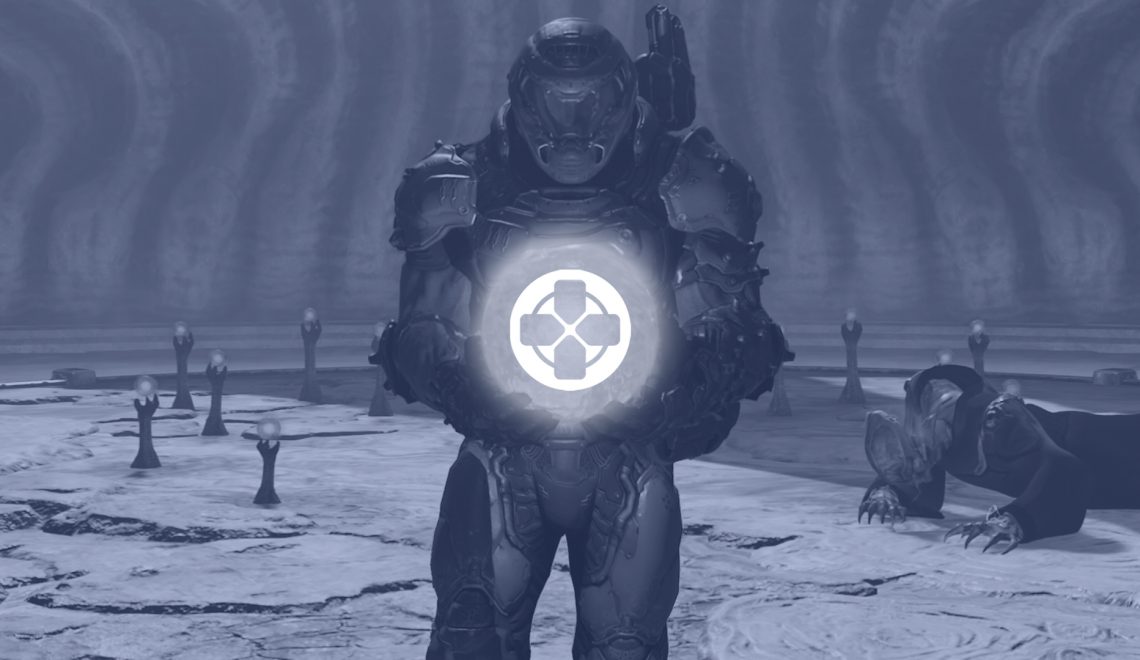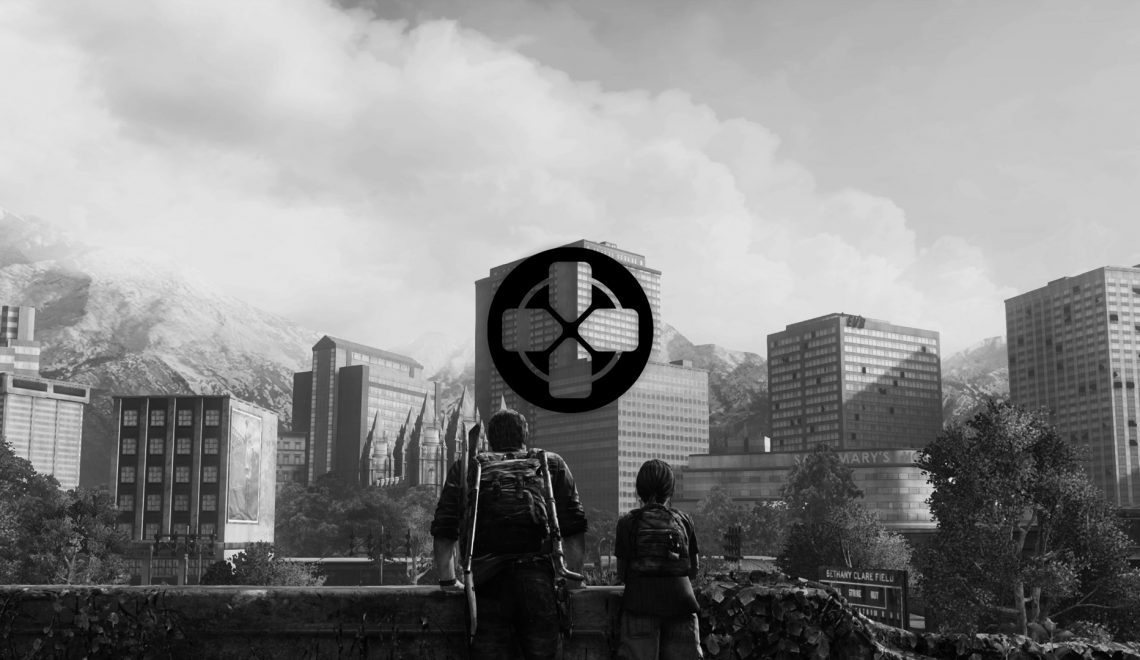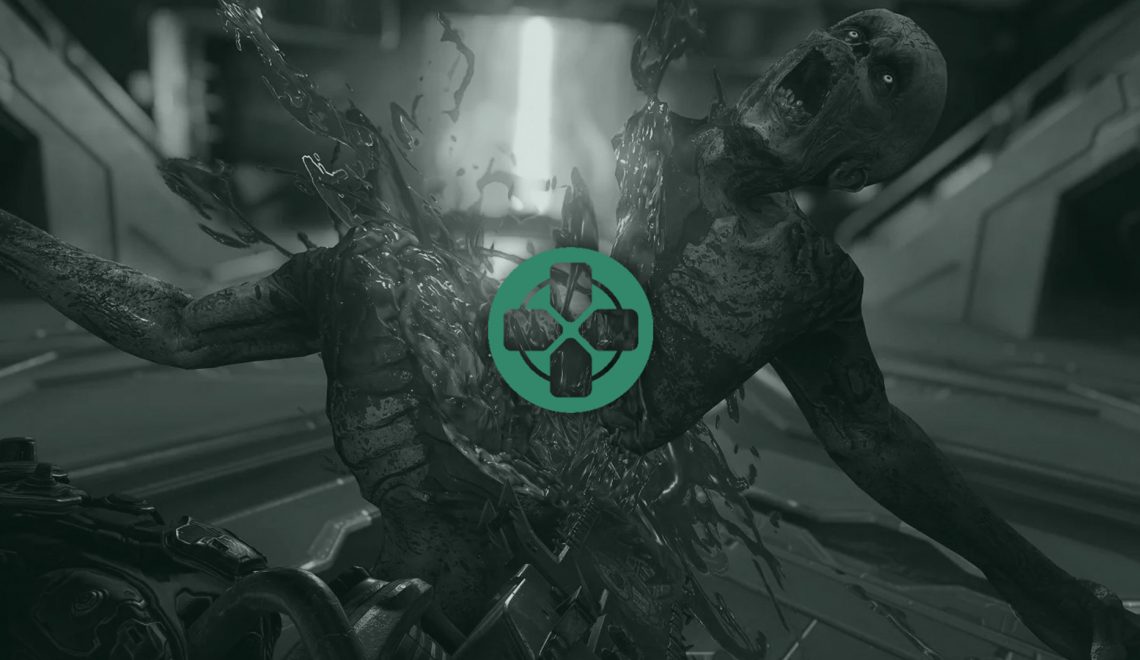I’ve never reviewed a game as much as Spyro the Dragon. It was the subject of a college essay I wrote critiquing its every facet and a review for Push Square a couple years ago. I’ve come full circle to relate my thoughts on the Reignited Trilogy’s version. Why come back to the game a third time?
I’m compelled to write about the game from a strong nostalgia that’s been burning strong for seven years. It came out of nowhere; I’d forgotten about the purple dragon for nearly a decade after playing Enter the Dragonfly and A Hero’s Tail. I know I got rid of them at some point, but it wasn’t because I’d outgrown Spyro. The games just didn’t have the same polish and allure as Insomniac Games’ trilogy…I still have my original copies.
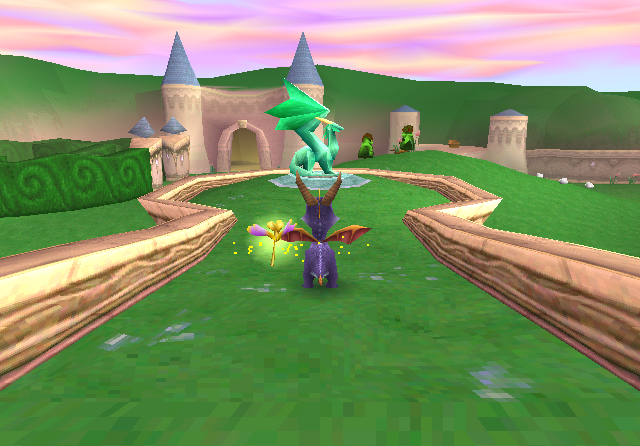
The start of something.
It wasn’t until I’d gotten older that I could articulate why they stuck with me. Whimsical worlds, humorous characters and dialogue, catchy music, fun minigames and collectible challenges—the trilogy had them all and only improved on these elements with each entry. However, I haven’t replayed Ripto’s Rage! andYear of the Dragon in ages. I also have a far greater willingness to admit the pitfalls and weaknesses of the series because honesty is true love to what you loyal.
I’ve clamored for a remake for as long as I’ve written about videogames. When I was interning with Game Informer, I walked in 10-degree weather frantically using data to watch the announcement trailer for Spyro: Reignited Trilogy with shaking hands. Tears came to my eyes with how faithful yet imaginative the Skylanders developer, Toys for Bob, was being to the original games. I’ve anxiously and enthusiastically enjoyed every bit of footage and concept art unveiled over this year, and now, you can join me as I look back on a beloved franchise in a new, exciting way.
I present my first review of Spyro the Dragon from the Reignited Trilogy. Enjoy.
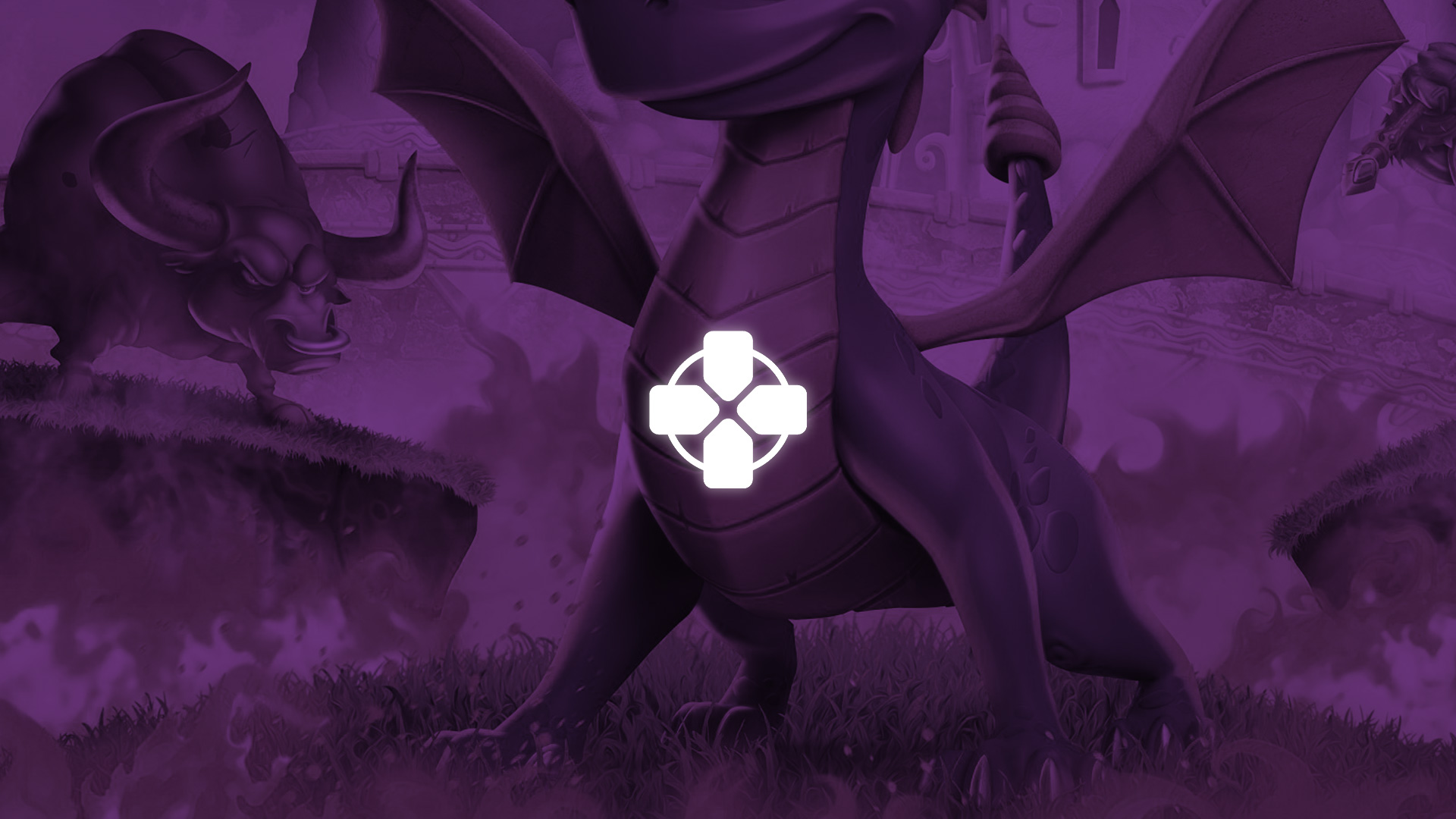
It was enough that I gasped when the first cutscene started playing. In the original game, there’s four or so body types and voices for every dragon with color swaps to make them seem varied. However, each one has a unique design and voice in this remake. Whereas you could only ascribe particular traits to Artisan dragons from before, someone like Lindar is now dressed as a clockmaker while Nestor wears the regalia and demeanor of a judge. Toys for Bob gave fitting roles to the dragons based on their original dialogue, homes, and voices, so whether it’s a chef, knight, barista, or chemist, there’s always someone distinct to free from crystal. A dragon with mechanical wings? A hipster with horn gauges and tattoos? Another with a rattlesnake tail? What was once a blur of generic templates is now a myriad cast with the most memorable takes on dragons I’ve seen in entertainment media.
It’s a sign of a true remake when a developer doesn’t recreate exact details that were clearly artistic compromises limited by old technology, but extrapolates the intent behind an environment or character’s design. This comes with unexpected artistic liberties in Reignited Trilogy given some bland or ambiguous design here and there, but Toys for Bob navigates this balance perfectly by drawing from the tone and themes of levels. In other words, the developer takes previously uninspired parts and helps them contribute to the (now enhanced) creative whole that Insomniac established.
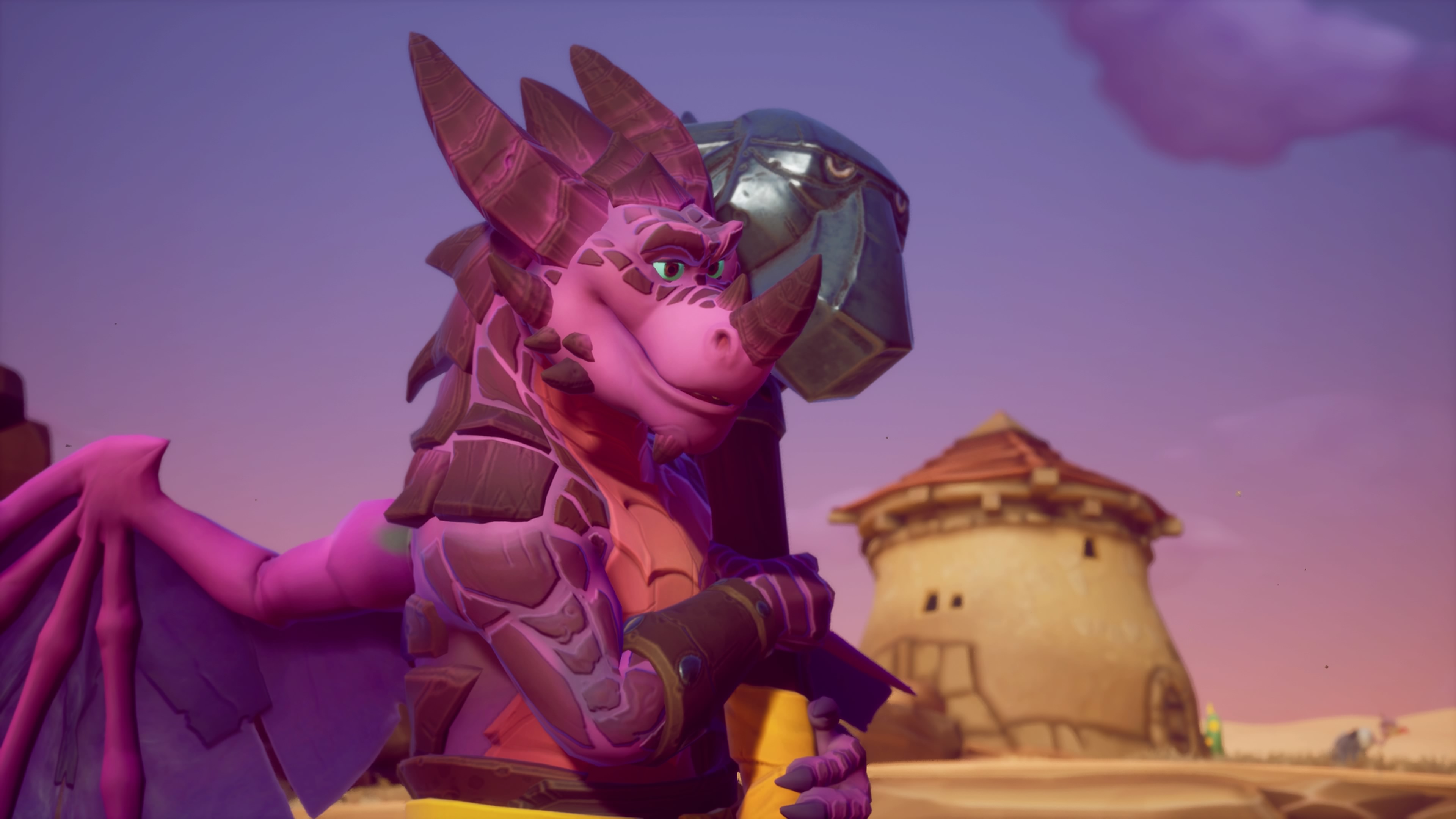
Halvor tells a story. His wings have been patched together from being split. He wields an enormous hammer, living up to his reputation as a Peace Keeper. I had to watch the cutscenes a couple times each to catch all the slight touches that Toys for Bob brought to the dragon world, its inhabitants, and classes.
For example, Dark Hollow’s setting has a dramatic, moody feel reminiscent to a stage play. So, Toys for Bob added shelves of books, wax candles, and turned the level’s three dragons into a scribe, playwright, and actor. Twilight Harbor’s weird, stone docks have been replaced with wooden planks, and the Gnorcs stationed there have purple goo guns instead of life-like rifles; an appropriate change narratively reinforced with vats of goo being processed in industrial buildings throughout the level). Even backdrops and enemies have additional, more specific details that build new life into worlds that will feel familiar and fresh at the same time.
That beginning cutscene I mentioned starts with Gnasty Gnorc taking offense to an elder dragon’s insults being broadcast from a live film crew. The world building extends here as well. Instead of cutting to Gnasty somehow reacting to these insults as if he can hear them from miles away, the remake shows him sitting on a couch watching the insults unfold on TV before he casts a spell encasing them all in crystal. There are motivational and racist (ha, of the dragon sort!) posters sprawled across his messy quarters. It gives a better impression of who he is and why he was locked away on a remote island, but to treat the game’s story seriously would be a silly mistake. It’s meant to be taken tongue in cheek, such as with an intentional continuity error where Spyro frees some of the same dragons near the game’s end, which the purple dragon calls out with confusion. There are several intriguing lines about Spyro “being ready” and fulfilling his destiny, almost as if the dragons set this whole scenario up from the start to test him…but perhaps that’s my reading too much into things. Spyro is about relishing in the here and now, taking the story in stride as an excuse to go on these adventures. It’s worth mentioning that Spyro’s voice takes on the kinder tone that Tom Kenny brought to the following two games. While his voice was obnoxious in the original, they’ve changed the tone and delivery of some lines without altering the wording to be less rude and more playful.
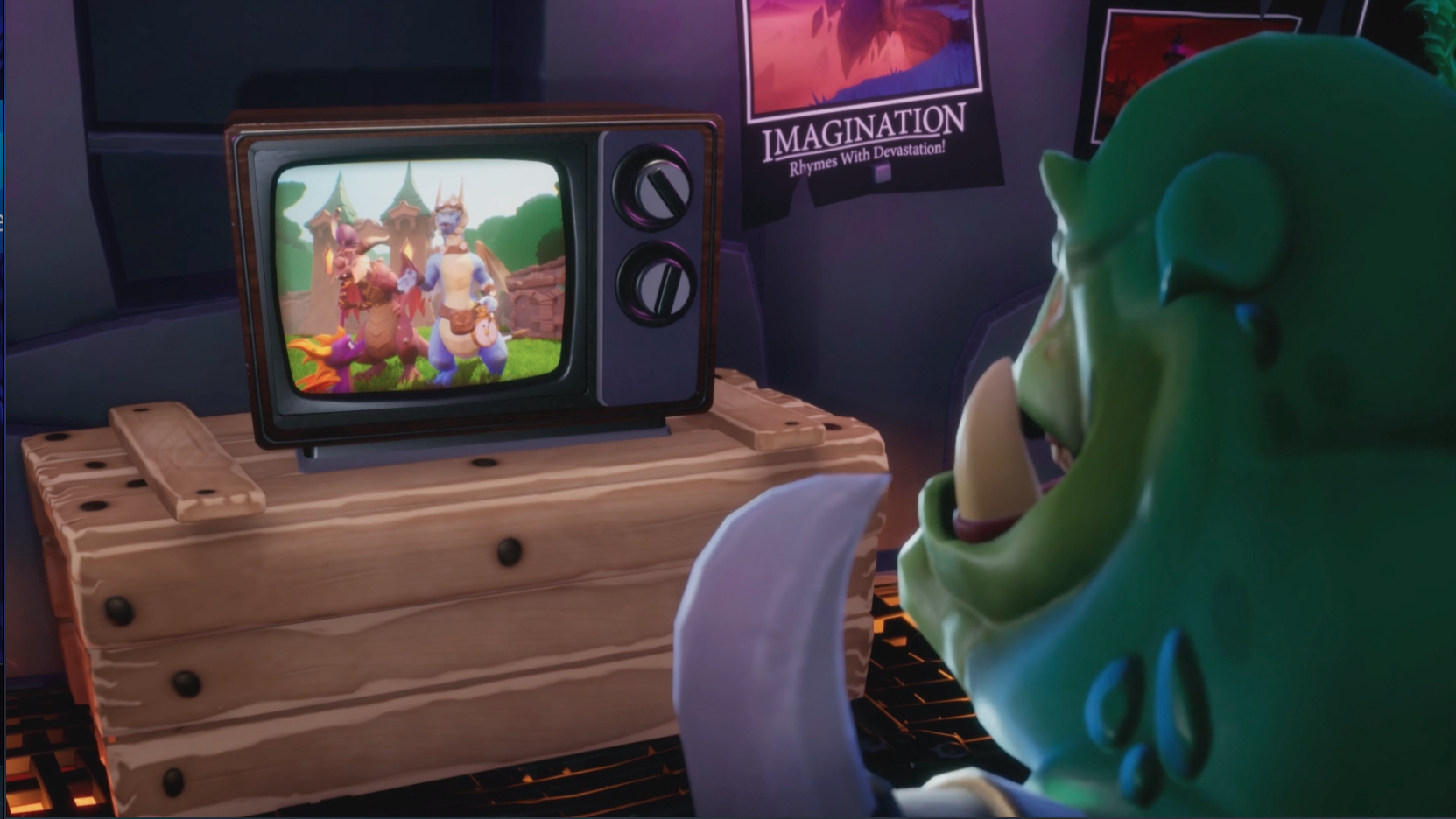
There’s no reinventions within the game. Anything that comes close is faithfully changed. I honestly wouldn’t have minded giving new dialogue to some dragons (e.g. the ones who only say, “Thank you for releasing me!”) or bringing in new faces to replace some repeated dragons you save later in the game, though.
The game shows technical advances in the minutiae as well. What were once flat, green plains are now flowing grass that not only parts when Spyro runs over it, but also burns when flamed. Light sources shift in color and intensity (glorious god rays are here, too). Weather and particles like snow, rain, dust, and embers have been added to their proper environments. Harsh, messy color palettes have been toned down with some environments for more diverse, visually-pleasing variants. The animations of the original now seem sluggish in contrast to the perky, lively motions of characters in the remake, which is especially fun with how enemies will react to your presence (either running away or ready to pounce) and act toward each other (sometimes the enemy of your enemy is your friend!). One could argue a couple new takes on environments and skyboxes aren’t as striking as before, but overall, I’d say that nearly everything is designed as if I’m looking through the projections of my childhood imaginings on the original, polygonal graphics.
I didn’t encounter any glitches, but long load times and bad frame pacing were consistent enough to be nuisances. I hope a patch will be sent out to disable motion blur…but if not, I’d rather it remain to slightly combat the frame pacing since it makes the game’s 30 frame-per-second performance look jittery. Another quibble I have is with the consistency of Sparx picking up gems. I don’t remember this being an issue before, but I often found myself backtracking to get a gem or butterfly that he’d miss, even though I walked right next to them.
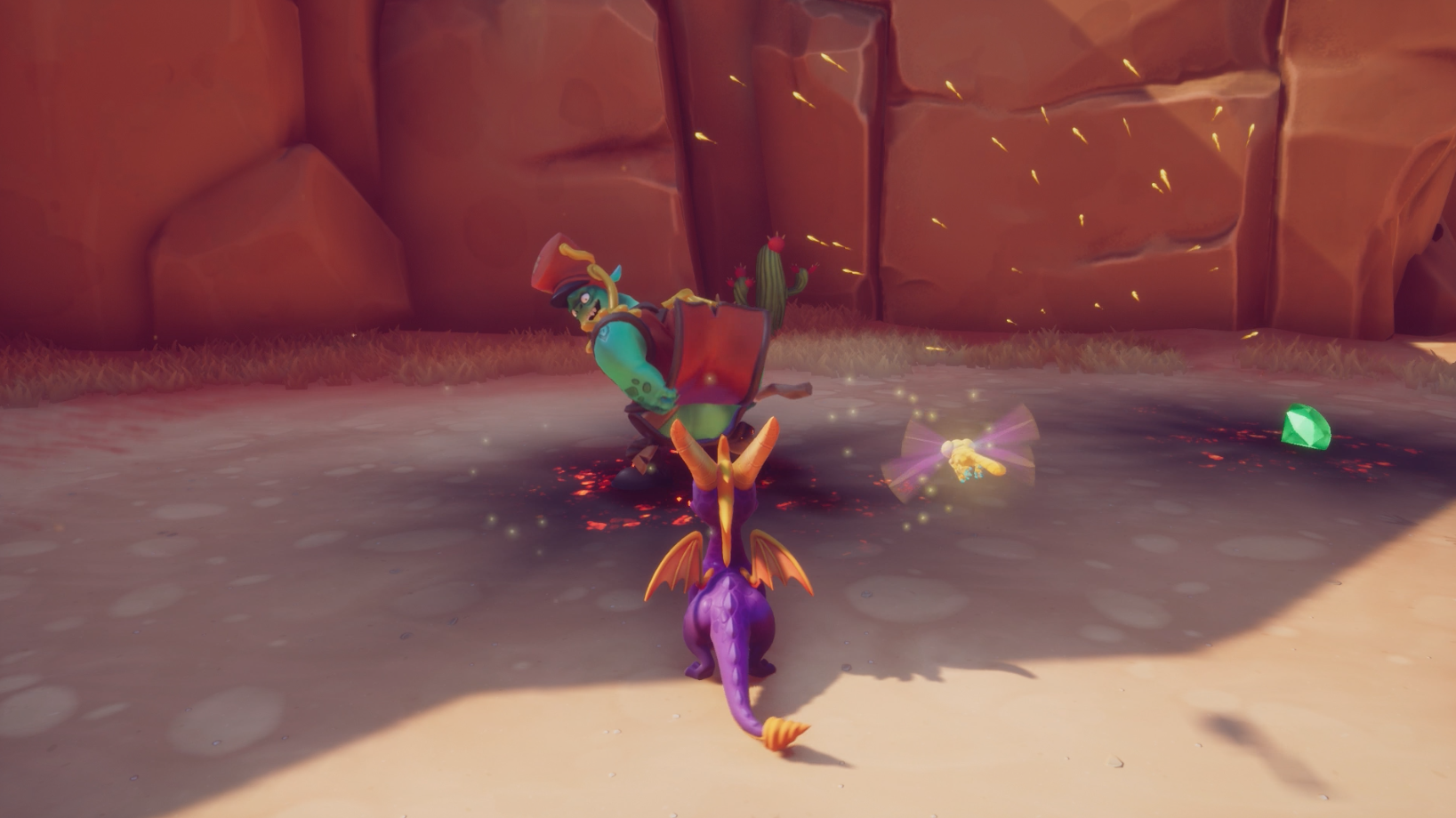
Ah, the gnorcs. Cheeky as ever.
Considering the original files weren’t available for Toys for Bob to reference, it’s incredible how the team managed to replicate the feel of mechanics to a T. Spyro the Dragon is as simple as it’s always been with combat consisting of charging and flaming fools. Rolling is rendered a useless mechanic since enemies are already easy to avoid. Some enemies surprise with ranged attacks, but you’ll do away with them in one hit before they can react. Even so-called bosses are pushovers that only take three attacks at the most to eliminate. The likes of Jacques and Gnasty Gnorc only have one means of directly attacking Spyro. Their difficulty pertains to some slightly harder platforming, which isn’t comparable to levels like Tree Tops and Wizard Peak that demand tricky jumps and observational skills.
Platforming is identically simple with jumping and gliding, only becoming a real challenge with the presence of “supercharge ramps” that allow Spyro to charge and leap far distances. Not even collectibles are hard to uncover since dragons, gems, and eggs (carried by the infamous thieves) are in plain sight. Again, only a few levels have cleverly hidden gems and dragons that push you to explore in great ways. Speedways are a fun distraction as well, which consist of four, free-form flight levels where Spyro must accomplish a certain amount of things before time runs out, like going through hoops and lighting lighthouses with flame. Ha, I would physically lurch whenever I pulled up to avoid splashing in water. Whether it’s perfectly swinging a corner or executing a smooth air roll, the flying feels good.
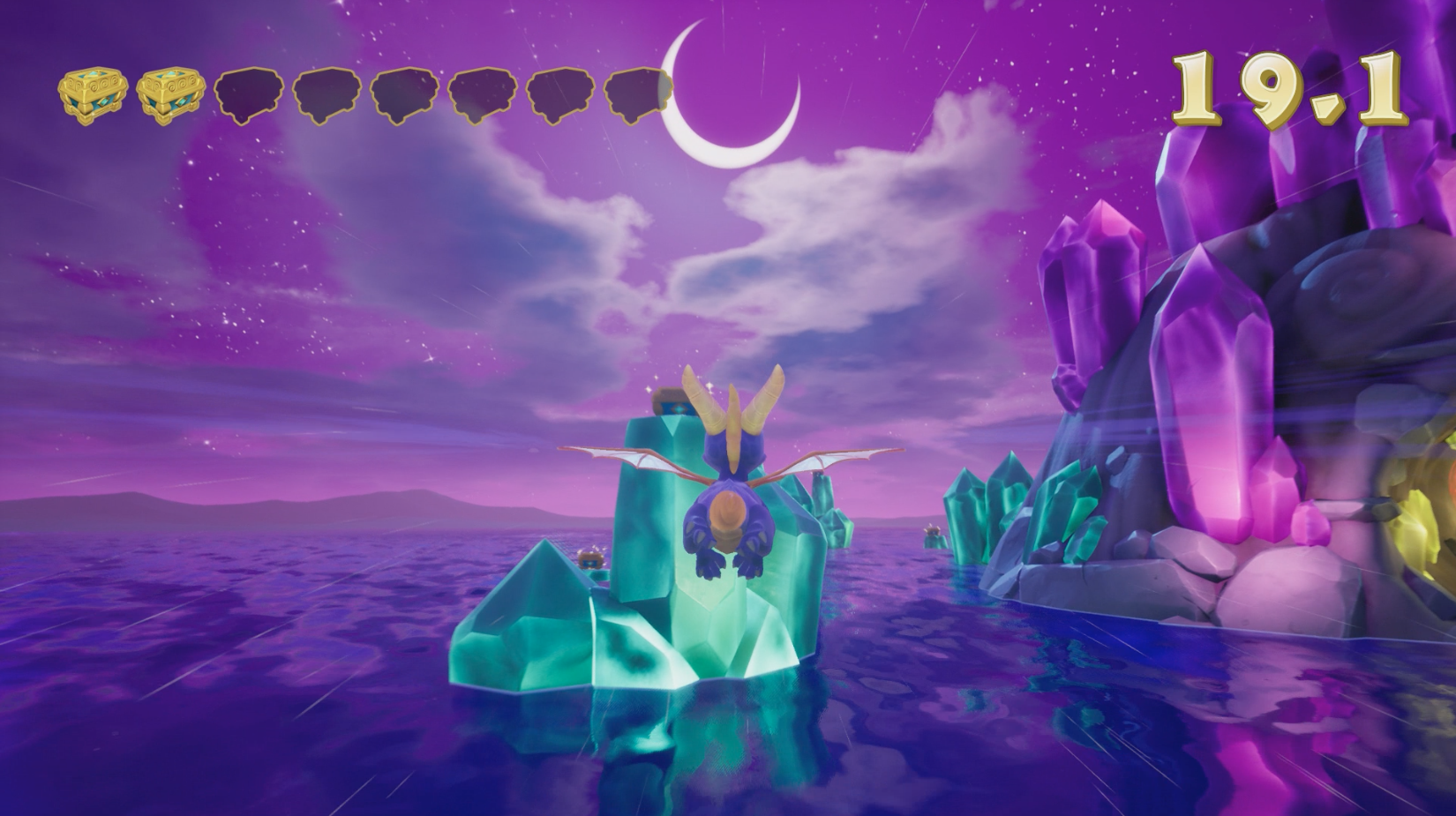
Most people will only be in these speedway levels for a few minutes, but they’re worth flying about casually just to appreciate the views.
Overall, the breezy pacing could be considered the game’s greatest downfall, paling in comparison to the tight, heart-pumping gameplay of other 3D platformers like Super Mario 64 and Crash Bandicoot. They’re like night and day in terms of mechanical complexity, but both show how making challenges out of a lot or little is possible. So, don’t expect Spyro the Dragon to use firebreathing or charging in a series of small, creative combos with enemies as the game progresses. Don’t expect platforming to become more elaborate with level design or evolve with mechanics. Don’t expect many collectibles to incite engaging exploration. These are concessions intended to create an easily accessible game for families, and while I’d rather have it another way, the design direction is…inviting and comfortable. In other words, it still works as a casual game when I view it as such. Amidst all the difficult shooters and action titles I play, it’s a relief to pop in this simple game and enjoy its artistry. I often see a lack of reasonable challenge as a con, and there’s no doubt that it holds this game back more than its successors, but at least there are trophies and skill points to earn (unlocks concept art) to have some new, interesting tasks to tackle.
It’s a mere joy to exist in this game’s host of weird, fanciful worlds. Insomniac went crazy with their signature, cartoony style with Ratchet & Clank, but it all began with the eccentric enemies and outlandish lands of Spyro the Dragon. You’ll be skirting the streets of a circular town carved into the periphery of a massive hole of ice, where you’ll find gnorcs on skates throwing snowballs at you. There’s a moody, dilapidated castle with monkeys patrolling it with a Frankenstein’s monster-like (popular culture version) robot boss at the end. A medieval square with matador gnorcs and bulls, a misty bayou with “attack frogs” and primitive fortresses made of tree trunks—these remind me of the bizarre scenarios that children relish in when they play make believe, and this game is chock full of them that made me grin with glee.
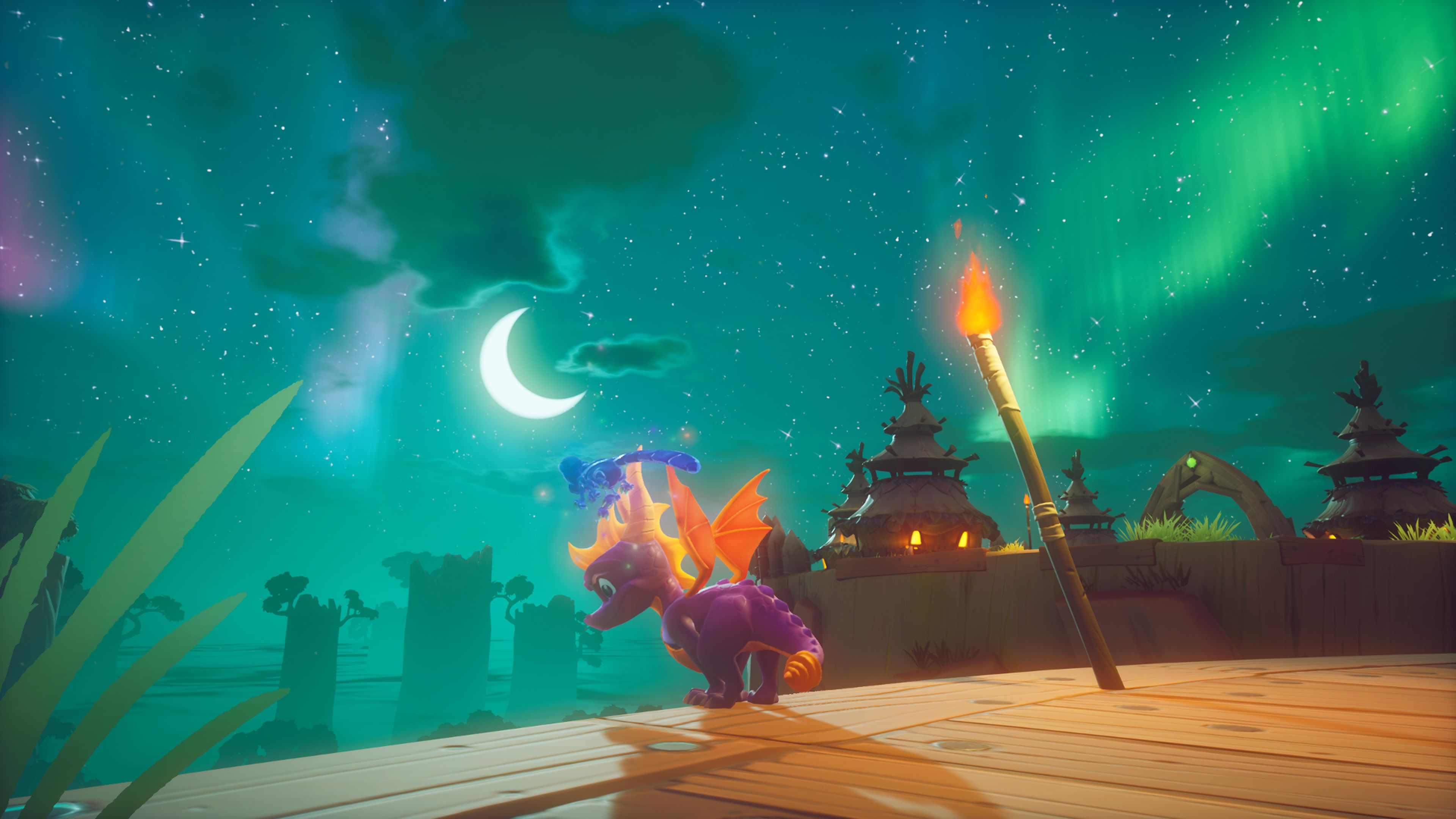
Look at those northern lights! The backdrops are rich with so much more detail since the original games could only display so much in the distance. They were innovative for such long draw distances, but now the Reignited Trilogy can do them even more justice.
The same joy characterizes the sound effects which have been recreated and, in some cases, expanded to bring more personality to the ambience and characters around Spyro. One of my favorite changes to the audio comes with the soundtrack. It’s like a remastered version of Stewart Copeland’s work that retains all the familiar melodies and instruments he used, but a nice touch is how the music dynamically shifts depending on whether Spyro is standing still or not. The music becomes muffled and atmospheric with the former, but smoothly transitions to normal when in motion. I would’ve liked to have seen this applied more to, say, increasing the tempo while charging or adjusting the volume of certain layers around specific areas, but it’s a positive spin on the music nonetheless.
concluding remarks
Spyro the Dragon is perfectly suited for kids. That core pillar serves as both its greatest strengths and weaknesses. Those looking for an engaging, challenging 3D platformer should look elsewhere, but that shouldn’t detract most people. If you want to kick back to some innocent, playful fantasy with comforting controls and laidback gameplay, it’s a wonderful candidate for all audiences. Most importantly, Toys for Bob has vivified the game’s charm to the modern age with one of the most thorough, loving remakes I’ve had the pleasure of experiencing. I was worried about how my childhood—the spark that ignited my love for gaming—would be reignited all these years later. My fears were misplaced.

